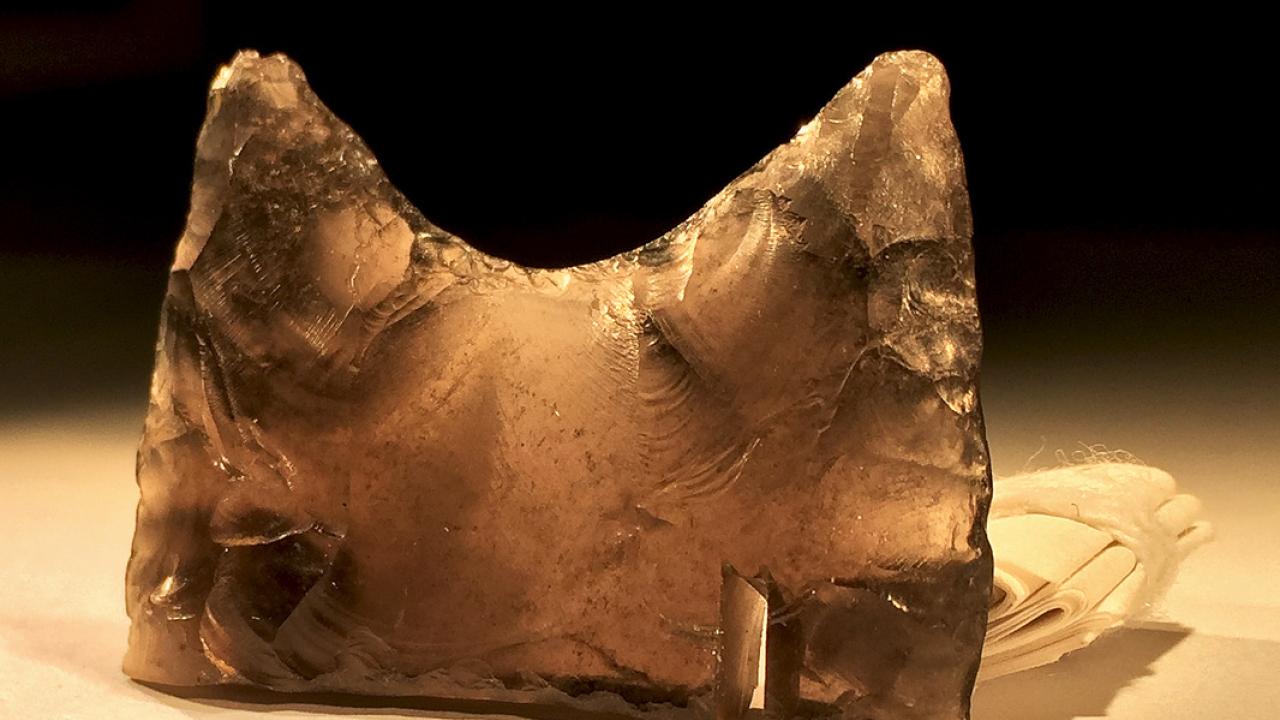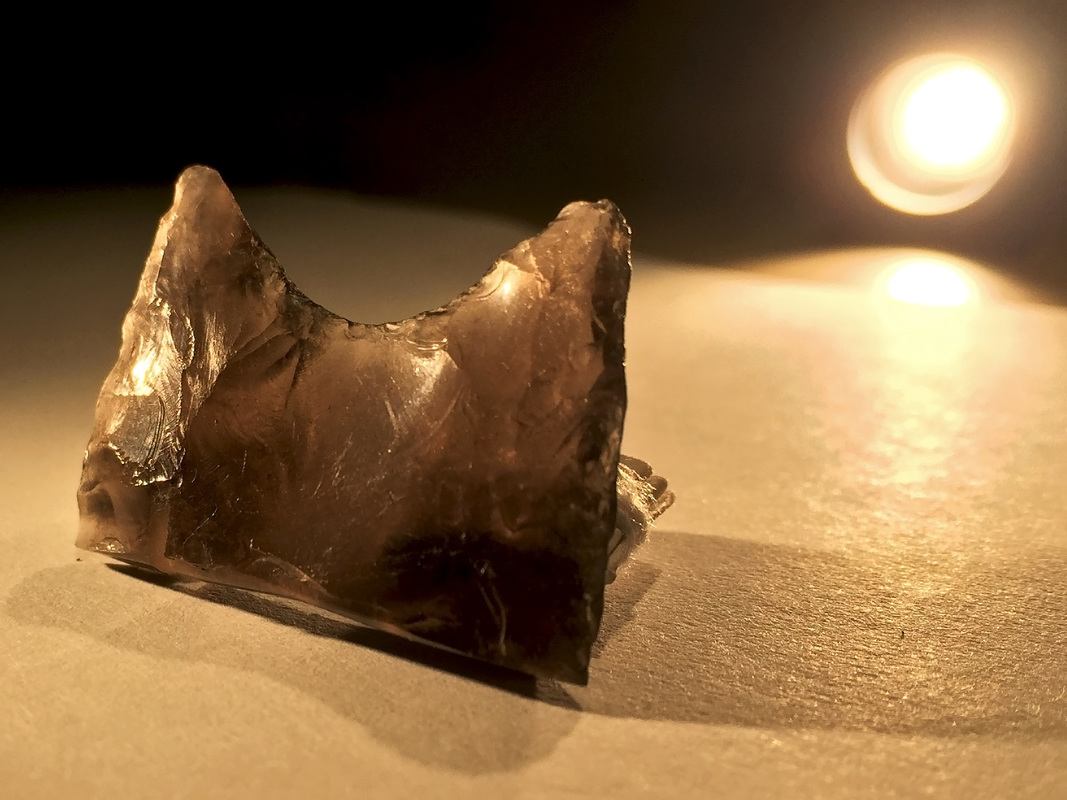
November 25, 2015: Fish Slough Clovis Point
This Clovis point was discovered during a surface survey near Fish Slough, California performed by Mark Giambastiani during research for his dissertation. Evidence for its Clovis affiliation can be seen in the triple fluting at the base. Fluting, the process of removing a medial channel flake from the base of the point, usually on both sides of the point, is a hallmark of Paleoindian period (c.a. 10,000-12,000 years ago) and served as a method to aide in the hafting of the point. On this partial point, you can see where the central flute was removed, flanked by two side flutes. The edges of this basal portion were smoothed so as to not cut into the material used to haft the point. Interestingly, this broken point also shows use-wear along the plane of breakage, perhaps repurposed as a cutting or scraping tool.
The straight-edged chunk missing from the point was taken for obsidian hydration research as part of Giambastiani’s dissertation. Since obsidian absorbs water from the air at a well-defined rate, researchers can observe how far water has penetrated a freshly exposed surface, such as through knapping, as a method to date how long ago the stone tool was made or modified. The rate of hydration can vary based on obsidian composition and temperature, so hydration rates need to be established for localities using corroborative evidence, and methods are still being refined.
Another method of research performed on this artifact was the use of X-Ray Fluorescence (XRF), which uses a high-energy X-ray to eject the electrons of an atom, even the tightly held electrons of inner orbitals. When an inner-orbital electron is expelled, an electron from a higher orbital “falls” to the inner orbital, which releases energy in the form of a photon. The energy of this photon is equal to the energy difference between the two orbitals and is a telltale signature of which element the photon was released from. In this manner, XRF can inform as to the atomic composition of an object. For archaeologists studying lithic material, XRF can be used to source obsidian, as the chemical constitution of obsidian varies by source. The XRF data of this point suggests that it is from the Queen Imposter (Saline Range Variety 1) obsidian source, which was non-local to where the point was found (at least 60 miles away), with other sources being much closer.
The Paleoindian period lasted from around 12,000-10,000 years ago and the people of this time are thought to have had a focus on big-game hunting, which would have included now-extinct megafauna such as the wooly mammoth, American mastodon, American horse, American camel, giant sloth, and giant armadillo, among others. The extent of human-influence on the extinction of these species is still a matter of debate, as is the significance of other food economies, which may have been more significant than previously held. At this time, group mobility was high, and people seemed to be moving extensively across the landscape. The Clovis material culture is remarkable in its extent, covering much of North America, and its significance in the peopling of the Americas remains an exciting subject of study.

